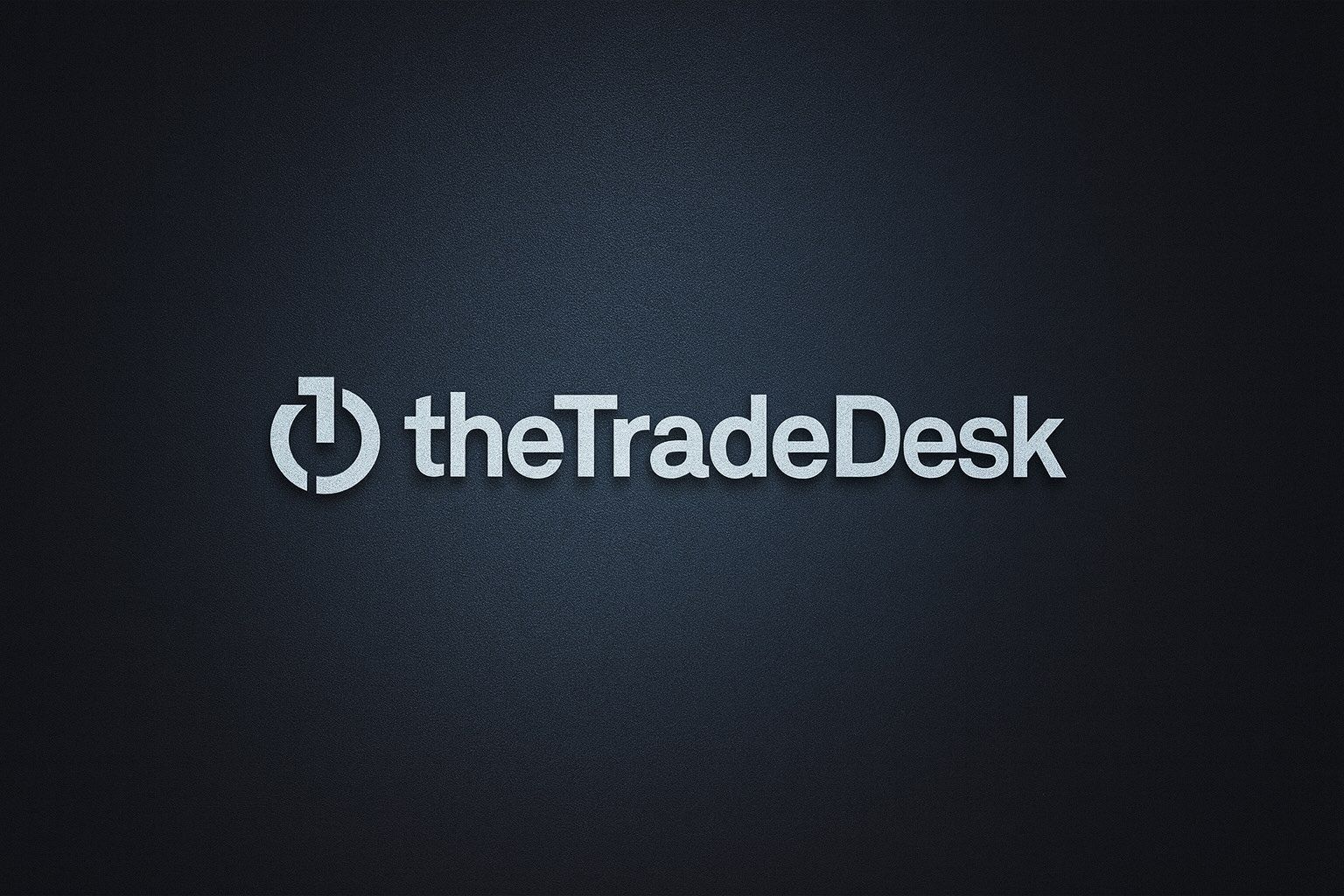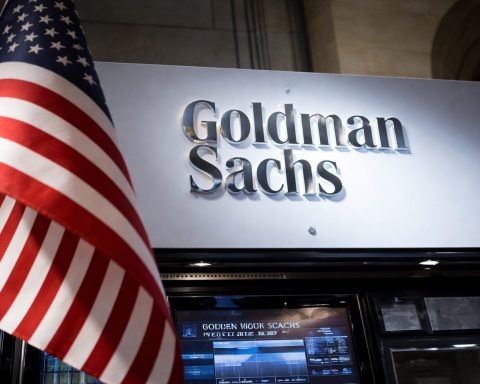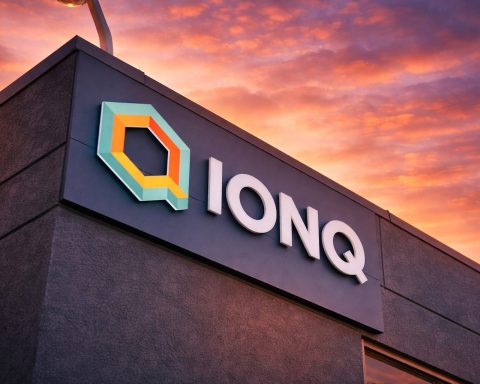- Stock Performance: The Trade Desk (NASDAQ: TTD) stock trades around the mid-$50s as of October 7, 2025, after a tumultuous year. Shares are down over 60% year-to-date, making TTD one of the S&P 500’s worst performers in 2025 [1]. A 52-week range of roughly $43 to $142 reflects extreme volatility [2]. The stock plunged ~50% following a disappointing August earnings report, bottoming near $43 in mid-September [3]. However, TTD has rebounded about 10–20% off those lows amid recent positive catalysts. Its valuation remains elevated with a P/E ratio ~66 despite the share price drop [4].
- Recent Catalysts: In the first week of October, The Trade Desk announced “Audience Unlimited,” an AI-driven overhaul of its third-party data marketplace, sparking a one-day stock jump of ~6–7% [5]. The company also unveiled a partnership with DIRECTV on Oct 1 to develop a custom streaming TV operating system (“Ventura” OS), aiming to expand reach in connected TV [6]. These strategic moves are seen as responses to intensifying competition in digital advertising.
- Major News (Late Sept – Oct 7): Aside from Audience Unlimited and the DIRECTV deal, recent days saw analysts and investors digesting TTD’s trajectory. On Oct 2, reports noted TTD shares fell 10.3% in Septemberamid fears of intensifying competition [7]. Yet by Oct 5, some observers highlighted “signs of a rebound” in TTD’s stock thanks to strong product momentum and technical support around $43 [8] [9]. Audience Unlimited was widely hailed as a “major upgrade” leveraging AI for better ad data targeting [10], and the market’s enthusiastic reaction underscored Wall Street’s desire to believe in TTD’s innovation pipeline [11].
- Analyst Outlook: Wall Street is divided yet broadly optimistic. The consensus rating is a “Moderate Buy” with ~36 analysts averaging a $84–85 12-month price target – implying nearly 60% upside from current levels [12]. However, some firms have grown cautious. Morgan Stanley downgraded TTD to Equal-Weight (neutral) in early October, citing “mounting concerns over slowing growth and intensifying competition” [13]. Wells Fargo likewise cut its price target to the low-$50s, noting TTD’s new products (like Audience Unlimited) are encouraging but in “early innings” [14]. Still, bullish analysts argue the recent selloff is overdone, with Guggenheim, Needham, and UBS reiterating Buy ratings and at least one firm (JMP Securities) assigning a $60+ target (~20% above mid-$50s) [15].
- Strategic Moves: 2025 has been a year of major platform advances for TTD. The company rolled out Kokai – an AI-powered upgrade to its core demand-side ad platform – touted by CEO Jeff Green as TTD’s “most significant platform upgrade to date…a new frontier in digital advertising”. However, the transition hasn’t been seamless, with some advertising clients reportedly finding Kokai’s interface less user-friendly than its predecessor (Solimar), contributing to slower growth and opening the door for rivals [16] [17]. TTD has responded by iterating rapidly on customer feedback [18] and launching new capabilities like Audience Unlimited (to make third-party data usage cheaper and more effective via AI [19] [20]) and OpenPath(bypassing middlemen in ad supply). The DIRECTV “Ventura” OS partnership aims to embed TTD’s ad tech at the TV operating system level, potentially expanding its foothold in connected TV as streaming grows.
- Competitive Landscape: The Trade Desk is the leading independent programmatic advertising platform outside Big Tech’s “walled gardens.” It faces fierce competition from giants with far deeper pockets. Google (Alphabet) still dominates digital ad infrastructure, and Amazon’s advertising business is expanding at breakneck speed [21]. In fact, Amazon’s demand-side platform (DSP) recently struck deals to be the exclusive programmatic buyer on Roku’s video ad inventory and to partner with Disney’s streaming apps – reaching ~80 million U.S. CTV households and encroaching on territory where TTD once thrived [22]. Amazon also inked a high-profile pact to serve ads on Netflix’s platform, underscoring its growing clout in streaming advertising. These moves heighten pressure on TTD to innovate and differentiate. Additionally, some advertisers have explored alternatives like Yahoo’s ad platform (which reportedly offers much lower fees than TTD) when discontent arose around TTD’s new interface [23] [24]. Nonetheless, TTD’s management emphasizes its role as the “leading independent DSP in the open internet” [25], positioning itself as an unbiased alternative to Big Tech’s closed ecosystems.
- Expert Commentary: Industry experts and partners have voiced optimism about TTD’s recent innovations. “The Trade Desk’s Audience Unlimited represents a fundamental shift in how advertisers approach targeting,” said Michael Beebe, CEO of Dstillery, praising the AI-driven data marketplace for turning third-party data from an afterthought into a “core driver of performance.” [26] Samantha Jacobson, TTD’s Chief Strategy Officer, highlighted that by securing bulk data deals and using AI, “The Trade Desk can pass on savings to advertisers, and our advanced AI will help advertisers understand the relevance of all data sources to their campaigns” – enabling marketers to layer in as much data as needed for optimal results [27]. On the analytical side, Morgan Stanley’s team admitted, “We have been wrong about the durability of TTD’s growth…lingering execution concerns, softness in the open web ad market, and intensifying competition in CTV” led to more modest expectations [28]. Yet even some cautious analysts maintain longer-term confidence: JMP Securities noted that despite a saturated ad-tech sector, The Trade Desk still warrants an Outperform rating, given its leadership position, and set a $60 target as a nod to the company’s potential recovery [29].
- Earnings and Expectations: The Trade Desk’s Q2 2025 results (reported August) showed 19% revenue growthto $694 million [30] [31] – solid but a deceleration from prior years. More troubling to investors was Q3 guidance of ~14% YoY growth ( ~$717 million revenue ), which is exceptionally low by TTD’s historical standards [32]. (For context, TTD had only seen growth that slow once, in Q2 2020 amid the pandemic [33].) This outlook, combined with the high expectations around the new AI platform, triggered the sharp post-earnings selloff. Wall Street now forecasts full-year 2025 earnings per share around $1.78 (up only ~7% YoY) [34], reflecting the growth challenges. The company’s new CFO, Alex Kayyal (a former Salesforce Ventures executive and TTD board member), was appointed in late August to help steer the financial strategy [35]. The next earnings report (Q3 2025, due in November) will be closely watched for any re-acceleration in growth or improved guidance. High client retention (historically 95%+ [36]) is a positive sign, but investors will want to see evidence that platform upgrades like Kokai and Audience Unlimited are reigniting spend from advertisers and translating into reaccelerated revenue.
Stock Performance & Valuation (2025 YTD)
After a dramatic run-up and crash, The Trade Desk’s share performance in 2025 has been a roller coaster. The stock soared in the first half of the year – at one point more than doubling – but then suffered a punishing collapse. In total, TTD fell about 70% from peak to trough, including an approximately 50% drop in the weeks following its Q2 earnings in August [37] [38]. This implosion wiped out all early-2025 gains and then some, leaving the stock deeply in the red for the year by late Q3.
As of October 7, 2025, TTD trades around $53–55 per share, rebounding off September’s lows. Even after the recent bounce, the stock remains roughly 60–65% below its 52-week high of ~$141 [39]. In fact, by late September TTD held the unenviable title of worst-performing stock in the S&P 500 for 2025, down about 63% year-to-date [40]. The magnitude of this decline reflects both the lofty expectations baked into TTD’s valuation and the shock of its growth slowdown (described further below).
In valuation terms, The Trade Desk isn’t cheap – a consequence of its history as a high-growth market leader. The current share price puts it at a price-to-earnings ratio around 65–70 [41], using forward earnings estimates. That lofty multiple assumes a reacceleration of growth in the coming years. It’s also worth noting TTD’s market capitalization has shrunk considerably from its peak (when the stock traded above $100); at ~$25 billion, TTD’s market cap is a fraction of giants like Google and Amazon but still commands a premium versus many smaller ad-tech peers.
From a technical perspective, some analysts see cause for cautious optimism. The stock found support around the $43 level – which coincidentally had been a floor earlier in the year – and buyers stepped in at those lows [42] [43]. MarketBeat noted that $43 has now held twice, suggesting a meaningful base that “bears have failed to break,” and highlighted a bounce of over 10% from the September bottom as evidence that “The Trade Desk’s recovery has legs” (at least in the near term) [44] [45]. Momentum indicators like MACD and RSI also turned more bullish into early October, after the stock had been extremely oversold following August’s plunge [46] [47].
That said, volatility remains high. The stock’s beta to the tech sector is significant, and any news – good or bad – can move TTD shares several percentage points in a single session. For example, on September 29 when the company unveiled Audience Unlimited, the stock spiked ~6–7% intraday [48] [49]. Conversely, on August 8after Q2 earnings, the stock cratered by 28% in one day amid a flurry of downgrades (part of the roughly 50% rout over August–September). Long-term investors in TTD have had to stomach extreme swings, though they have also been rewarded in the past (TTD delivered over 350% returns from 2020 through 2024) [50]. The key question now is whether the current recovery marks a sustainable turnaround or just a temporary bounce in a continuing downtrend.
Recent News & Major Developments (Early October 2025)
The turn of the month brought a flurry of noteworthy developments for The Trade Desk:
- AI Data Marketplace Overhaul (“Audience Unlimited”): On September 29, The Trade Desk announced Audience Unlimited, calling it a “major upgrade” to the way advertisers access and use third-party data on its platform [51] [52]. This new system employs artificial intelligence to score and rank data segments by their relevance to an advertiser’s campaign, and offers transparent, flat pricing that significantly lowers the cost barrier to using third-party data [53] [54]. In essence, Audience Unlimited bundles data from hundreds of providers and lets advertisers activate “all the relevant data sources” at once for an inclusive fee, instead of paying à la carte for each segment [55] [56]. The goal is to eliminate the two big hurdles that kept many advertisers from tapping third-party data: high cost and complexity/uncertainty about which data is worth it [57] [58].The rollout of Audience Unlimited is paired with new AI-driven tools in TTD’s platform (part of the Koa AI suite) to maximize its impact. For example, TTD will introduce “Koa Adaptive Trading Modes” – a Performance Mode where AI co-pilot Koa fully optimizes bids using features like Audience Unlimited (included at no extra cost in that mode), and a Control Mode where human traders have more manual control but can still opt-in to AI recommendations [59] [60]. By offering Audience Unlimited essentially for free in the automated mode (and at a small percent-of-media cost in manual mode), TTD is incentivizing clients to trust its AI to handle data targeting.Industry reaction: The announcement was met with positive buzz in the ad world. A Dstillery executive lauded the move, saying it “transforms data from an afterthought into a core driver of performance…with hundreds of thousands of segments available, advertisers finally have the tools to unlock the full potential of data and AI” [61]. At LiveRamp, a data partner, the SVP of Partnerships noted that “solutions like Audience Unlimited…take the guesswork out of finding high-quality segments…With the added power of AI, marketers can drive even more value and efficiency from third-party data” [62]. Investors also reacted swiftly – TTD’s stock jumped ~6.6% on Sept. 29 upon the news [63] [64], signaling that the market sees this as a meaningful innovation. Analysts at Yahoo Finance termed it a potential “turning point” for TTD if it reinvigorates growth [65].
- DIRECTV Partnership on “Ventura” TV OS (Oct 1): In a strategic push into television, The Trade Desk and DIRECTV announced plans (Oct 1) to co-develop a custom version of TTD’s Ventura TV Operating Systemthat incorporates DIRECTV’s streaming interface [66]. Ventura is The Trade Desk’s new connected-TV OS initiative, designed as an open, interoperable platform that any smart TV maker or streaming hardware partner can adopt. The custom Ventura build with DIRECTV will allow TV manufacturers or even hotels and retail venues to easily deploy a smart TV system where the default interface is DIRECTV’s content portal [67]. Viewers would get seamless access to free ad-supported TV (FAST) content and apps via the Ventura app store, and they can one-click upgrade to DIRECTV’s paid packages if desired [68].This partnership is significant for a few reasons: (1) It could broaden distribution of Ventura OS, putting TTD’s software (and by extension its ad tech and Unified ID 2.0 identity framework) into more living rooms. (2) It deepens TTD’s relationship with a major pay-TV player, aligning interests in the evolving CTV landscape. (3) It underscores TTD’s strategy of going outside the browser (where Google dominates) and instead embedding into the TV ecosystem itself. For DIRECTV, teaming up with The Trade Desk may help modernize its user experience and ad capabilities without building an OS from scratch. Both companies emphasized the ease with which third-party TV manufacturers or hospitality providers could adopt this Ventura + DIRECTV solution.While financial terms weren’t disclosed (Ventura likely isn’t a revenue contributor yet), the move grabbed industry headlines. It comes as competition in the connected-TV ad space heats up (Roku, Amazon Fire TV, Google TV, and proprietary OS’s from Samsung/LG are all battling for market share). By offering a white-label OS infused with its advertising tech, The Trade Desk is trying a “trojan horse” approach to ensure its presence in CTV ad inventory. It’s a bold gambit to counter the likes of Amazon – which recently struck deals with Roku and Disney to widen Amazon’s own CTV ad reach [69] – by making TTD’s platform part of the default TV software in various devices.
- September Performance and Other News: In the days leading up to Oct 7, media coverage also focused on whyThe Trade Desk’s growth had slowed and how the company is addressing it. A Motley Fool analysis on Sept 23 suggested that one culprit for TTD’s recent struggles is the rollout of its new Kokai platform. Kokai (launched in 1H’25) is the AI-enhanced upgrade to TTD’s core demand-side platform, but some ad agency users preferred the older interface (Solimar) and found Kokai initially lacking in usability [70] [71]. According to an Adweek report cited, this drove a few clients to experiment with rival DSPs (even Yahoo’s, due to a significantly lower fee, or Amazon’s) in the interim [72] [73]. Crucially, some customers mistakenly believed TTD would force everyone onto Kokai by retiring Solimar imminently, adding to their anxiety [74]. CEO Jeff Green clarified that Solimar is not being immediately phased out, and the company has been rapidly iterating Kokai’s features in response to feedback [75]. The implication is that TTD might have hit a temporary speed bump in growth due to this platform transition, rather than a permanent competitive erosion – if they can smooth out the user experience issues quickly.Another positive late-September development: TTD’s stock got a bounce on Sept 22 when Google was hit with a landmark antitrust ruling (a judge ruled not to break up Google’s ad business) [76]. While the ruling spared Google from extreme remedies, it kept pressure on Google’s advertising dominance and perhaps gave investors hope that independent players like TTD could benefit from any moves to level the playing field. That day, TTD shares rose ~4.5% on news of Google’s legal setback [77]. It was a reminder that The Trade Desk’s narrative is partly tied to external factors like regulation of Big Tech and the overall digital ad spend environment, in addition to its own execution.
Analyst Forecasts & Earnings Expectations
Despite the drubbing TTD’s stock took in recent months, analyst sentiment by early October 2025 remains cautiously optimistic on balance. According to Yahoo Finance and other aggregators, The Trade Desk carries a consensus “Buy/Moderate Buy” rating from Wall Street. Out of 30+ analysts covering the stock, a strong majority maintain a bullish or positive view, though price targets have been coming down following TTD’s guidance miss.
Consensus price target: Around $84–85 per share, which implies roughly ~59% upside from the ~$53 level in early October [78]. The targets span a wide range, reflecting uncertainty: recent reports put the high estimate at $155 (far above TTD’s prior peak, suggesting some ultra-bullish bets on full recovery) and the low estimate around $45(essentially betting TTD will languish near its lows) [79]. The spread between high and low targets – over 3x – underscores how differently analysts view TTD’s future trajectory in a rapidly evolving ad-tech market.
Below is a snapshot of select analyst updates and forecasts as of Oct 2025:
| Analyst / Firm | Rating | 12-mo Price Target | Rationale/Notes |
|---|---|---|---|
| Morgan Stanley | Equal-Weight (Downgraded) | $50 | Moved to sidelines citing “slowing CTV growth & rising competition”. Cut FY25–26 forecasts; concerned Amazon’s gains will pressure TTD [80] [81]. |
| Wells Fargo | Equal Weight | $53(from $68) | Acknowledges improving ad spend trends in Q3 and TTD’s accelerating product cadence. Notes TTD is responding to Amazon’s DSP with new tools (Audience Anywhere, OpenAds), which are “encouraging signs, but still early innings.” [82] |
| JMP Securities | Market Outperform | $60 | Remains bullish despite recent headwinds. Stated ad-tech is saturated but TTD’s leadership justifies optimism. $60 target implies ~20% upside from ~$50 [83]. Maintained Outperform while advising caution on near-term industry softness. |
| Needham, UBS, Guggenheim | Buy/Overweight (various) | $80–$100+(est.) | These and other firms reiterated bullish stances in Sept, seeing TTD’s selloff as a buying opportunity. Emphasize TTD’s dominant independent position and potential share gains as digital ad growth stabilizes. (Guggenheim refreshed a Buy rating in early Oct) [84]. |
| Consensus (36 analysts) | Moderate Buy | $84.48(avg) | 58.9% upside to avg. target [85]. High: $155; Low: $45. Reflects expectation of rebound in revenue growth by 2024–26. |
(Sources: Analyst reports via TheFly, TipRanks, MarketBeat, Oct 2025 [86] [87] [88] [89].)
In terms of earnings expectations, the bar has been reset lower after TTD’s cautious outlook. For the upcoming Q3 2025report (likely scheduled in the first week of November), management’s guidance of $717 million revenue (+14% YoY)and EBITDA margin around 40% will be the benchmark [90]. Analysts will also focus on commentary for Q4 and whether election advertising (U.S. campaign spending going into 2026) might boost TTD’s growth. Any improvement above the 14% growth guidance or upbeat commentary on Q4 could help rebuild confidence.
For FY2025, current Wall Street consensus forecasts revenue of roughly ~$2.25–2.3 billion (growth in the mid-teens%) and EPS around $1.75–1.80 (which, as noted, is only high-single-digit percentage growth over 2024) [91]. These muted growth rates are a far cry from the 25%+ annual growth TTD had delivered for years, which is why the stock’s valuation and narrative took a hit. Bulls argue that 2025 is a “digestion year” – absorbing platform changes and macro ad softness – and that growth will reaccelerate to 20%+ in 2026/2027 as AI-driven ad demand picks up. Bears caution that competition and market saturation could keep TTD’s growth permanently lower.
Notably, The Trade Desk has no debt and substantial cash reserves (over $1 billion), so it has flexibility to continue investing in R&D and strategic deals even if near-term growth is underwhelming. The company has also remained profitable on a GAAP basis (Q2 net income of $90M, 13% margin [92] [93]) and generates healthy cash flow, which sets it apart from many ad-tech peers that struggle to break even. This financial strength gives TTD a longer runway to execute its strategy – a point often cited by bullish analysts.
Strategic Initiatives & Partnerships
Facing a dynamic digital advertising environment, The Trade Desk in 2025 has doubled down on innovation and partnerships to maintain its edge. Key strategic initiatives include:
- Kokai Platform & AI Integration: Unveiled in mid-2025, Kokai is TTD’s next-generation platform upgrade, infusing AI throughout the media buying process. Kokai introduced an AI “co-pilot” (named Koa), more automation in campaign optimization, and integration of advanced features like Predictive Clearing and improved cross-channel decisioning [94] [95]. Jeff Green described Kokai as leveraging first-party data and AI to drive better results “by integrating more data into every decision” [96] [97]. The aim is to keep The Trade Desk’s offering cutting-edge, especially as advertisers demand more sophistication in targeting and measurement. However, as noted earlier, the Kokai rollout had growing pains, prompting TTD to refine the user experience. The introduction of Adaptive Modes (Performance vs. Control) and Audience Unlimited under Kokai’s umbrella shows TTD’s commitment to making the platform both powerful and user-friendly. This large-scale upgrade is essentially TTD’s answer to the AI wave sweeping through advertising – ensuring that it remains a leader in applying machine learning to ad spend optimization.
- Identity and Privacy Solutions (UID2): The Trade Desk has been spearheading an industry effort to replace third-party cookies and mobile IDs with a privacy-conscious alternative called Unified ID 2.0 (UID2). In 2025, UID2 gained further traction, with more publishers, advertisers, and tech platforms adopting it as an open standard for identity in advertising. This is strategically important as Google plans to deprecate cookies (in Chrome by 2024/25) and privacy regulations tighten – TTD’s promotion of UID2 is aimed at preserving addressability for the open internet outside walled gardens. Additionally, TTD’s OpenPath initiative (launched in 2022) continued to expand in 2025: OpenPath connects advertisers directly to premium publisher inventory, bypassing Google’s ad exchange. By growing OpenPath, TTD reduces its dependence on third-party ad exchanges and gives advertisers a more direct route to supply, potentially improving efficiency and transparency. These moves show TTD positioning itself as a champion of the “open web” ad ecosystem, differentiating from giants like Google who have vertically integrated stacks.
- CTV and Retail Media Focus: The fastest-growing areas of digital advertising – Connected TV (streaming ads) and Retail Media (ads on e-commerce platforms) – are focal points for The Trade Desk’s strategy. TTD has struck numerous integrations with streaming platforms and device makers (the DIRECTV Ventura OS deal being one example, but also earlier tie-ups with Amazon’s Fire TV, Samsung, and streaming app channels). Even though Amazon’s exclusive deals with Roku and Disney were a setback, The Trade Desk still accesses significant CTV inventory (e.g., on Peacock, Warner Bros Discovery, Paramount, etc.) and is working on novel solutions like “Edge” AI processing to better target CTV ads. In retail media, TTD partnered with major retailers (Walmart, Target’s Roundel, etc.) to allow advertisers to use retailer shopper data for targeting via The Trade Desk’s platform [98] [99]. These partnerships are crucial as ad dollars shift toward retail media networks; TTD wants to be the hub that connects those retail data insights with omnichannel ad buying.
- Leadership & Talent: A strategic change in 2025 was the hiring of Alex Kayyal as CFO (effective August) [100]. Kayyal’s background in tech investing (Salesforce Ventures) and his stint as a TTD board member suggest he brings both financial acumen and a tech growth mindset. His appointment came as longtime CFO Blake Grayson departed, and it signals TTD’s focus on investor relations and possibly M&A or strategic investments (given Kayyal’s VC experience). Additionally, TTD added Omar Tawakol to its Board [101] – Tawakol is an ad-tech veteran (founder of BlueKai, a data platform, and a current AI startup founder) – which reinforces TTD’s commitment to data and AI at the highest advisory level. These leadership moves align with the company’s narrative of continuous innovation and may help reassure investors that TTD has the right team to navigate challenges.
- Global Expansion: While not headline-grabbing in early October, The Trade Desk has been expanding internationally, which is part of its strategic plan. The company has been growing its presence in Asia-Pacific and Europe, tailoring its offerings to those markets (for instance, working with Chinese publishers via partnerships, since TTD doesn’t operate in China directly, and expanding in India, Latin America, etc.). Any commentary from executives often highlights the global TAM (total addressable market) for programmatic advertising and how TTD’s platform is positioned to capture a share of that as more markets embrace data-driven ad buying. This is more of a slow-burn strategy but provides a counterpoint to the idea that TTD’s growth is done – there are still geographic frontiers and traditional-media-to-digital shifts that can fuel growth in coming years.
In summary, The Trade Desk’s strategic playbook in 2025 is about leveraging AI and data to improve its core product, forging alliances in key channels (CTV, retail, identity), and differentiating itself as an independent, transparent alternative to Big Tech ad platforms. Management is clearly aware of the competitive threats and is responding by trying to innovate faster (e.g. the rapid-fire introduction of new tools like Audience Unlimited, OpenAds, etc. referenced by Wells Fargo [102]). The effectiveness of these initiatives will become clearer over the next few quarters – they need to translate into regaining spend momentum from ad clients and warding off encroachment by rivals.
Competitive Landscape in Ad Tech
The digital advertising industry is increasingly competitive and concentrated, and The Trade Desk finds itself both collaborating and competing with different players across the ecosystem:
- Walled Gardens (Google, Amazon, Meta): These are the giants that operate closed advertising platforms using their own user data (e.g. Google’s Search and YouTube ads, Amazon’s e-commerce ads, Facebook/Instagram ads). By design, The Trade Desk cannot buy inventory inside Google Search/YouTube or Meta’s properties, and those platforms dominate huge swaths of digital ad spend. Instead, TTD focuses on the “open internet” – everything from independent websites, mobile apps, streaming services, digital audio, gaming, and more. Google in particular looms large as both a competitor and quasi-partner. Google’s DV360 is a rival DSP that some large advertisers use (especially for YouTube and Google’s own inventory). TTD has to constantly demonstrate the value of an independent platform versus Google’s vertically integrated stack. The antitrust spotlight on Google (DOJ’s case, etc.) could indirectly help TTD if it leads to remedies that benefit independent ad tech [103], but that’s speculative at this point.
- Amazon’s Rise: Perhaps the most discussed competitive threat in 2025 is Amazon. Amazon’s advertising business (mostly sponsored ads on Amazon.com) has exploded, and importantly Amazon has a DSP that sells video and display ads using Amazon’s data off Amazon’s site as well. This year, Amazon aggressively expanded in Connected TV advertising. It became the exclusive programmatic partner for Roku’s ad inventory and integrated with Disney’s streaming apps, giving Amazon’s DSP access to some of the most-watched CTV content (Disney+ with ads, Hulu, ESPN+ with ads) [104]. This encroaches on territory where The Trade Desk previously served as a key buying platform. Morgan Stanley analysts pointed out that Amazon’s DSP expansion “threaten[s] TTD in areas where it has historically benefitted” [105], estimating Amazon’s deals extend its reach to ~80 million U.S. CTV households. Additionally, Amazon’s ad tech offers attractive first-party shopper data (from Amazon’s purchase history), which is a strong lure for advertisers.The Trade Desk is responding by emphasizing its neutrality and reach across many publishers (versus Amazon which, while large, is still a single company’s ecosystem). TTD also touts that it doesn’t compete with advertisers or publishers since it doesn’t own media – whereas Amazon and Google are both media owners and ad sellers. Still, the competitive pressure from Amazon is real: it’s often cited as a reason for reduced investor confidence in all independent ad tech firms. Some agencies might allocate more budget through Amazon’s platform if it proves effective on Roku/Disney inventory, potentially at TTD’s expense. Wells Fargo noted TTD is “starting to see management respond to Amazon DSP competition” by rolling out new features (like “Audience Anywhere” and “OpenAds”, which presumably are TTD’s enhancements to extend audience targeting across devices and open up more ad supply) [106]. The arms race with Amazon is likely to continue, especially in connected TV and retail media.
- Other Demand-Side Platforms: Apart from the mega-caps, TTD competes with a number of other DSPs. Some notable ones: Google DV360 (part of Google Marketing Platform), Amazon DSP, Yahoo (Former Verizon Media) DSP, Adobe Advertising Cloud, and trade-focused ones like MediaMath (which actually filed for bankruptcy in 2023, highlighting how tough the space is) and Criteo (historically focused on retargeting, now expanding in retail media). Many advertisers use multiple DSPs for different purposes. TTD’s share of the open-internet programmatic spend is significant – it’s often considered the largest independent DSP – but it’s not a monopoly. For example, the agency holding companies sometimes have in-house or preferred DSP relationships (Xandr’s platform under Microsoft, or the proprietary systems like Omnicom’s Omni). The competitive landscape in 2025 thus features a few large players (TTD, Google, Amazon) and several smaller ones. Notably, Yahoo’s DSPgot a mention in industry chatter because advertisers frustrated with TTD’s Kokai were testing it, partly because Yahoo’s “take rate” (the fee it takes) was said to be a fraction of TTD’s [107] [108]. TTD’s take rate has been roughly 20% (though it provides value-added services beyond just access). If competitors undercut on price, TTD may feel pressure to justify its higher fees via better performance.
- Supply-Side and Data Partners: While not direct competitors, it’s relevant to mention supply-side platforms (SSPs) like Magnite, PubMatic, etc., which help publishers sell ads. The industry is seeing some consolidation there, and TTD’s OpenPath partially disintermediates SSPs by connecting directly. This has created some tension (some SSPs might view TTD as encroaching on their role). However, TTD still works closely with many SSPs for inventory access. On the data side, TTD partners with dozens of data providers (e.g. Oracle Data Cloud, Nielsen, LiveRamp, etc.) and now with Audience Unlimited, it’s aggregating many of them into one offering. So while TTD has competition, it also has an ecosystem of partners who rely on its platform for demand.
- Macro Environment: A final competitive factor is the overall ad market growth. If ad budgets are growing(tailwind), there’s more for everyone – and TTD, as a leader in programmatic, stands to gain if more TV and radio dollars shift into digital channels. Conversely, if marketers tighten budgets due to economic concerns, competition for each advertising dollar intensifies. In 2025, global ad spending growth has been moderate. GroupM (WPP) revised 2025 ad growth forecasts down to ~6% [109], and Magna projects ~5% growth [110], with strength in digital offsetting declines in traditional media. So there is still a rising tide, but not as rapid as in the post-pandemic rebound. This means TTD can’t rely solely on macro growth; it needs to actively win share from competitors to outperform. The company often cites its growth outpacing the market average – e.g., 19% revenue gain in Q2 vs ~8-10% digital ad market growth – indicating it was gaining share [111] [112]. The question is whether that share gain continues in H2 2025 and 2026, given the competitive moves discussed.
In summary, The Trade Desk’s competitive landscape is intense and evolving. TTD’s strengths include its independence, breadth of channels, advanced tech, and trusted relationships with advertisers and agencies. Its challenges come from Big Tech competitors leveraging scale and first-party data advantages, as well as upstart or niche players pressuring fees and client service. The next year will likely see this battle play out in connected TV ad deals, retail media integrations, and perhaps further industry consolidation. TTD’s strategy of being the neutral “Switzerland” of ad tech is being put to the test by giants building their own empires.
Expert & Executive Commentary
To gauge The Trade Desk’s current situation and outlook, it’s illuminating to hear what industry experts, company executives, and financial analysts are saying in their own words:
- Jeff Green (Co-founder & CEO, The Trade Desk): On the Q2 2025 earnings call, Green remained upbeat despite the slowdown, emphasizing how “the first half of 2025 has been defined by meaningful innovation across our platform. Kokai is helping advertisers drive better results by integrating more data into every decision, using AI as a co-pilot…” [113] [114]. He highlighted wins in connected TV, retail media, and partnerships, claiming “we’re delivering exceptional value to clients and helping to strengthen the open internet in the process.” [115] [116] Green’s message: The fundamentals of TTD’s business and value proposition remain strong; the company is innovating its way through the challenges.
- Samantha Jacobson (Chief Strategy Officer, The Trade Desk): In the press release for Audience Unlimited, Jacobson explained the rationale: “Audience Unlimited is going to transform the way marketers think about the value and cost of third-party data… By securing bulk pricing for data, The Trade Desk can pass on savings to advertisers, and our advanced AI will help advertisers understand the relevance of all data sources to their campaigns and layer in as much as they need to optimize performance.” [117] This comment underscores TTD’s attempt to remove friction (cost and complexity) in using data, effectively saying: we heard the advertisers’ pain points and here’s our big solution.
- Advertiser Perspective: Ad industry trades like Adweek and AdExchanger provided some critical perspective. Adweek reported that some ad buyers felt Kokai’s new interface was less intuitive, lacking certain features they liked in Solimar, which caused frustration [118] [119]. One quote paraphrased from an agency exec: “It’s not that Kokai is a bad system – it’s powerful – but the learning curve and missing familiar tools made some of our teams panic and try other DSPs.” In response, TTD’s Jeff Green noted on the call that “iteration on client feedback has been really rapid” for Kokai [120], indicating they are in active dialogue with customers to improve the platform.
- Michael Beebe (CEO, Dstillery – data partner): As mentioned earlier, Beebe praised TTD’s Audience Unlimited: “The Trade Desk’s Audience Unlimited represents a fundamental shift in how advertisers approach targeting…embedding AI-powered audience selection directly into campaign strategy…advertisers finally have the tools to unlock the full potential of data and AI to power smarter, more relevant targeting.” [121]Coming from a third-party data provider’s CEO, this is notable because it suggests data vendors see TTD’s approach as adding value (potentially driving more usage of their data) rather than undercutting them.
- Morgan Stanley Analyst Team: In their downgrade note (early October), Morgan Stanley analysts bluntly stated, “We have been wrong about the durability of TTD’s growth in the face of lingering execution concerns, softness in the open web ad market, and intensifying competition in CTV.” [122] They highlighted that TTD’s Q3 guidance of +14% rattled confidence, and pointed to Amazon’s moves as a serious threat. They also raised an interesting point about advertiser pushback on TTD’s fees: checks indicated TTD’s take rate might be nearly double that of some other DSPs, and products like OpenPath/Kokai – intended to streamline ad buying – were viewed by some with skepticism, “arguably reminiscent of past objections to Google’s DV360.” [123] In essence, MS warned that if advertisers begin to see TTD as too powerful or too expensive, they might seek alternatives, echoing criticisms once aimed at Google’s dominance. Despite these concerns, Morgan Stanley didn’t turn outright bearish – their Equal-Weight rating and $50 target suggest a hold stance, and they acknowledged staying “constructive” on TTD’s role as the leading independent DSP [124], just not bullish in the near term.
- Wells Fargo (Alec Brondolo, analyst): Wells Fargo’s commentary was more balanced. They noted some positive trends: improving gross ad spend in Q3 and faster “product cadence” from TTD – i.e., the company is shipping new features faster, such as Audience Unlimited and another initiative called OpenAds [125]. Brondolo’s view was that these show TTD isn’t standing still against Amazon. However, WF kept an Equal Weight rating, essentially waiting to see more proof. They moved their price target down to $53 (roughly where the stock was), signaling a fairly neutral stance: neither undervalued nor overvalued at that point [126].
- JMP Securities (Ron Josey, analyst): Josey reportedly maintained an Outperform rating. He acknowledged industry saturation but argued TTD’s broad reach and client relationships remain best-in-class. His $60 price target, while lower than prior highs, implies he sees the stock recovering as the company navigates current challenges [127]. JMP’s stance likely reflects a belief that TTD’s long-term story (taking share as advertising shifts to programmatic/CTV, etc.) is intact, even if 2025 is a hiccup.
- Investment Managers: Some large shareholders (per 13F filings, firms like Baillie Gifford, Vanguard, etc. hold stakes) have not publicly commented recently, but in the past, growth-focused investors have lauded TTD’s management and market opportunity. In a Q2 investor letter, Brown Advisory (a growth fund) called The Trade Desk a “category leader in programmatic ads with significant runway”, citing its high client retention and profitability as reasons they like it [128] [129]. They credited “strong results” in Q2 for boosting the stock earlier in the year [130], though ironically that was written before the Q3 guidance fallout. It shows that sentiment can shift quickly – what was seen as strong can suddenly be viewed as underwhelming when growth decelerates.
Overall, the commentary paints a picture of a company at a crossroads:
- Insiders and optimists stress innovation, long-term growth drivers, and adaptability (AI, new products, listening to customers).
- Skeptics underscore competition, execution missteps, and valuation concerns (slower growth, high fees, rivals gaining ground).
What everyone agrees on is that The Trade Desk remains a central player in digital advertising. As one analyst quipped, “If digital ads were a freeway, The Trade Desk built one of the fastest lanes – it’s just encountering some traffic right now.” The coming quarters will show whether TTD can clear that traffic by fine-tuning its tech and strategy, or if congestion from Big Tech and market saturation will keep its growth at a lower gear.
Conclusion
As of October 7, 2025, The Trade Desk Inc. stands at an inflection point. Its stock has endured a harrowing decline and partial rebound, reflecting both macro pressures and company-specific growing pains. The near-term outlook is clouded by slower growth and fierce competition, but the company is not standing idle. New AI-powered offerings like Audience Unlimited, strategic plays in connected TV with Ventura OS, and a relentless focus on the open internet ecosystem demonstrate TTD’s resolve to drive the next chapter of growth.
Investors will be watching upcoming earnings for evidence that these moves are bearing fruit – such as reaccelerating revenue, stable or rising advertiser spend, and maintained profit margins. In the bullish scenario, The Trade Desk’s investments in AI and data could fortify its moat and recapture momentum (turning 2025’s slump into a springboard for 2026). In the bearish scenario, the combination of Big Tech competition and any execution stumbles (like the Kokai transition) could cap TTD’s growth and compress its valuation further.
For now, Wall Street’s consensus leans optimistic (a moderate buy with substantial upside targets), but with a cautious undertone. The Trade Desk has long been a market darling in ad-tech, and 2025 has tested that status. How the company navigates the next few quarters – balancing innovation with client satisfaction, and independent positioning with partnership opportunities – will likely determine if TTD’s stock can reclaim its former heights or if this wild ride continues on a bumpy road.<hr>
Sources: Financial disclosures and press releases from The Trade Desk; news and analysis from Yahoo Finance, TechSpace 2.0 (ts2.tech), The Motley Fool, MarketBeat, Investing.com, TipRanks/TheFly, and other financial media [131] [132] [133] [134]. All information is up to date as of October 7, 2025.
References
1. www.nasdaq.com, 2. www.marketbeat.com, 3. www.marketbeat.com, 4. www.marketbeat.com, 5. www.marketbeat.com, 6. www.tipranks.com, 7. swingtradebot.com, 8. www.marketbeat.com, 9. www.marketbeat.com, 10. www.marketbeat.com, 11. www.marketbeat.com, 12. www.marketbeat.com, 13. www.marketbeat.com, 14. www.tipranks.com, 15. www.marketbeat.com, 16. www.nasdaq.com, 17. www.nasdaq.com, 18. www.nasdaq.com, 19. www.thetradedesk.com, 20. www.thetradedesk.com, 21. www.marketbeat.com, 22. www.investing.com, 23. www.nasdaq.com, 24. www.nasdaq.com, 25. www.investing.com, 26. www.thetradedesk.com, 27. www.thetradedesk.com, 28. www.investing.com, 29. www.marketbeat.com, 30. investors.thetradedesk.com, 31. investors.thetradedesk.com, 32. www.nasdaq.com, 33. www.nasdaq.com, 34. seekingalpha.com, 35. investors.thetradedesk.com, 36. investors.thetradedesk.com, 37. www.marketbeat.com, 38. www.marketbeat.com, 39. www.marketbeat.com, 40. www.nasdaq.com, 41. www.marketbeat.com, 42. www.marketbeat.com, 43. www.marketbeat.com, 44. www.marketbeat.com, 45. www.marketbeat.com, 46. www.marketbeat.com, 47. www.marketbeat.com, 48. www.marketbeat.com, 49. www.marketbeat.com, 50. www.nasdaq.com, 51. www.thetradedesk.com, 52. www.thetradedesk.com, 53. www.thetradedesk.com, 54. www.thetradedesk.com, 55. www.thetradedesk.com, 56. www.thetradedesk.com, 57. www.thetradedesk.com, 58. www.thetradedesk.com, 59. www.thetradedesk.com, 60. www.thetradedesk.com, 61. www.thetradedesk.com, 62. www.thetradedesk.com, 63. www.marketbeat.com, 64. www.marketbeat.com, 65. finance.yahoo.com, 66. www.tipranks.com, 67. www.tipranks.com, 68. www.tipranks.com, 69. www.investing.com, 70. www.nasdaq.com, 71. www.nasdaq.com, 72. www.nasdaq.com, 73. www.nasdaq.com, 74. www.nasdaq.com, 75. www.nasdaq.com, 76. markets.financialcontent.com, 77. markets.financialcontent.com, 78. www.marketbeat.com, 79. www.marketbeat.com, 80. www.investing.com, 81. www.investing.com, 82. www.tipranks.com, 83. www.marketbeat.com, 84. www.marketbeat.com, 85. www.marketbeat.com, 86. www.investing.com, 87. www.tipranks.com, 88. www.marketbeat.com, 89. www.marketbeat.com, 90. www.nasdaq.com, 91. seekingalpha.com, 92. investors.thetradedesk.com, 93. investors.thetradedesk.com, 94. investors.thetradedesk.com, 95. investors.thetradedesk.com, 96. investors.thetradedesk.com, 97. investors.thetradedesk.com, 98. investors.thetradedesk.com, 99. investors.thetradedesk.com, 100. investors.thetradedesk.com, 101. investors.thetradedesk.com, 102. www.tipranks.com, 103. markets.financialcontent.com, 104. www.investing.com, 105. www.investing.com, 106. www.tipranks.com, 107. www.nasdaq.com, 108. www.nasdaq.com, 109. ts2.tech, 110. ts2.tech, 111. investors.thetradedesk.com, 112. investors.thetradedesk.com, 113. investors.thetradedesk.com, 114. investors.thetradedesk.com, 115. investors.thetradedesk.com, 116. investors.thetradedesk.com, 117. www.thetradedesk.com, 118. www.nasdaq.com, 119. www.nasdaq.com, 120. www.nasdaq.com, 121. www.thetradedesk.com, 122. www.investing.com, 123. www.investing.com, 124. www.investing.com, 125. www.tipranks.com, 126. www.tipranks.com, 127. www.marketbeat.com, 128. finance.yahoo.com, 129. investors.thetradedesk.com, 130. finance.yahoo.com, 131. www.marketbeat.com, 132. www.marketbeat.com, 133. www.thetradedesk.com, 134. www.investing.com







